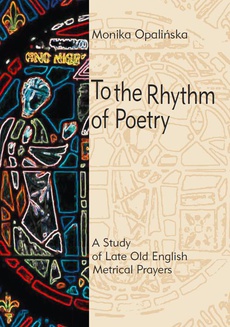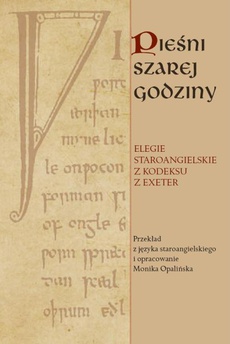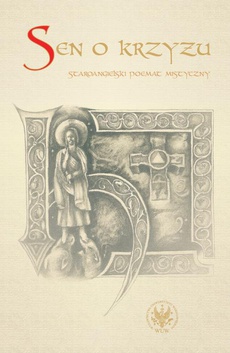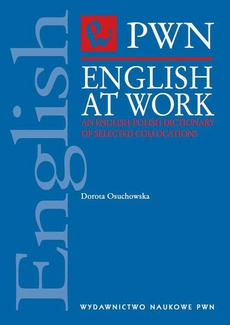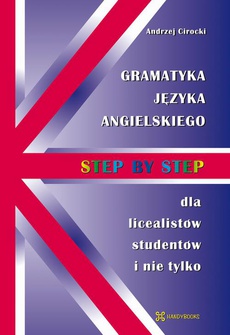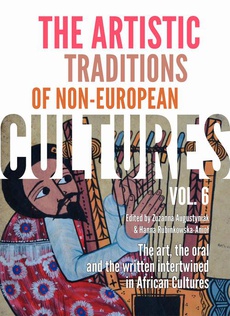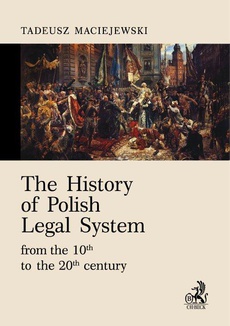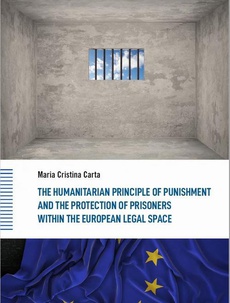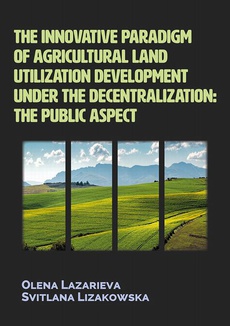INNE EBOOKI AUTORA
To the Rhythm of Poetry
A study of late old english metrical prayers
Autor:
Wydawca:
Format:
Opracowanie grupy staroangielskich tekstów religijnych datowanych na połowę XI wieku. Analiza obejmuje wersyfikowane psalmy z Psałterza Paryskiego oraz parafrazy metryczne tekstów liturgicznych Credo, Pater noster i Gloria Patri.
Autorka koncentruje się na języku i strukturze metrycznej poematów, sięga do rękopisów, porównując zapis średniowieczny z interpretacją edytorską. Wykazuje się przy tym znajomością kodykologii i paleografii, a także kontekstu kulturowego i językowego, w którym omawiane dzieła powstawały. Wszystkie utwory wywodzą się z kultury chrześcijańskiej, powstały na kanwie oryginałów łacińskich, noszą także piętno tradycji rodzimej – przedchrześcijańskiej.
Publikacja pokazuje, w jakim stopniu anonimowym mistrzom anglosaskim udało się dochować wierności treściom przekładanych lub parafrazowanych utworów łacińskich, a także równocześnie utrzymać formalne cechy wiersza staroangielskiego.
*****
Compilation of a group of Old English religious texts from the mid-11th century. The analysis includes versified psalms from the Paris Psalter and metric paraphrases of the liturgical texts Credo, Pater noster and Gloria Patri. The author focuses on the language and the metric structure of the poems, uses manuscripts, comparing the medieval record with the editorial interpretation. The publication shows to what extent anonymous Anglo-Saxon masters managed both to remain faithful to the content of the translated or paraphrased Latin works, and to maintain the formal features of an Old English poem.
This book focuses on a group of late Old English metrical prayers, in particular the vernacular translations of the Paris Psalter psalms and the paraphrases of Latin Credo, Pater noster and Gloria Patri. These unique poetical prayers, in which the traditional Germanic verse form was adapted to convey the spiritual foundations of the Christian faith, have remained beyond the scope of scholarly attention for many years. This has not always been so, however. The history of Anglo-Saxon scholarship indicates that they captured and held the interest of early academics. As paraphrases and translations from Latin into the vernacular these texts provide insights into the interface between language and culture in late Anglo-Saxon age. Composed at the end of the Old English period they also reflect current linguistic and metrical changes.
To the Rhythm of Poetry outlines the Anglo-Latin background of the poems and combines metrical analysis with philological reading of the texts in their manuscript context. Looking at all these complementary aspects of the poems, the book seeks to readdress the questions concerning the nature of Old English metre, the range of Anglo-Saxon verse forms and the boundaries of its poetic corpus. Central to these enquiries is the notion that the vernacular paraphrases of liturgical prayers and the metrical psalms form an important part of that corpus.
| Rok wydania | 2014 |
|---|---|
| Liczba stron | 282 |
| Kategoria | Język angielski |
| Wydawca | Uniwersytet Warszawski |
| ISBN-13 | 978-83-235-1528-9 |
| Numer wydania | 1 |
| Język publikacji | angielski |
| Informacja o sprzedawcy | ePWN sp. z o.o. |
POLECAMY
Ciekawe propozycje
Spis treści
| Preface | 7 |
| Acknowledgments | 11 |
| Symbols and abbreviations | 12 |
| Chapter 1: Old English metre – an introduction to historical scholarship and selected theoretical frameworks | 13 |
| 1.1. Introduction: defining Old English verse | 13 |
| 1.2. Constructing poetry – early modern studies of Old English verse | 18 |
| 1.3. Old English verse in the light of modern metrical theories | 24 |
| 1.3.1. Alliteration and metrical stress | 26 |
| 1.3.2. Sievers’ theory of fi ve metrical types | 34 |
| 1.3.3. Anacrusis | 37 |
| 1.3.4. Hypermetric verses | 38 |
| 1.3.5. Reframing Sievers’ metrical types | 40 |
| Chapter 2: The metrical structure and textual criticism | 46 |
| Chapter 3: The metrical psalms from the Paris Psalter | 73 |
| 3.1. Setting the scene: the manuscript, printed editions | |
| and philological studies | 73 |
| 3.2. The composition of the metrical psalms | 85 |
| 3.2.1. The verse as a constituent of translation | 88 |
| 3.2.2. Textual coherence and poetic effects: the integrity of poetical lines | 98 |
| 3.2.3. Schematization and creativity in the metrical psalms | 108 |
| 3.3. Tracing the metrical patterns in the Paris Psalter psalms | 115 |
| 3.3.1. The preferred rhythmical patterns | 119 |
| 3.3.2. Simplex metrical types and metrical levelling | 128 |
| 3.3.3. Hybrid verses | 136 |
| 3.3.4. Anacrusis in the metrical psalms | 143 |
| 3.3.5. Metrical equivalences | 148 |
| 3.4. Final remarks | 157 |
| Chapter 4: Old English liturgical verse | 159 |
| 4.1. Liturgical prayers in the Anglo-Saxon Christian tradition | 159 |
| 4.2. Sources and resources: manuscripts, editions and critical studies | 166 |
| 4.2.1. The Lord’s Prayer from Codex Exoniensis | 166 |
| 4.2.2. The Benedictine Office | 170 |
| 4.2.3. The Corpus group | 182 |
| 4.3. The texts | 197 |
| 4.3.1. The Exeter Lord’s Prayer | 197 |
| 4.3.2. The Junius Lord’s Prayer and the Corpus Lord’s Prayer | 212 |
| 4.3.3. Old English Doxology (Gloria I, Gloria Patri) | 222 |
| 4.3.4. Credo | 233 |
| 4.4. Final remarks | 247 |
| Concluding remarks | 249 |
| Appendix 1 | 252 |
| Appendix 2 | 258 |
| References | 268 |

